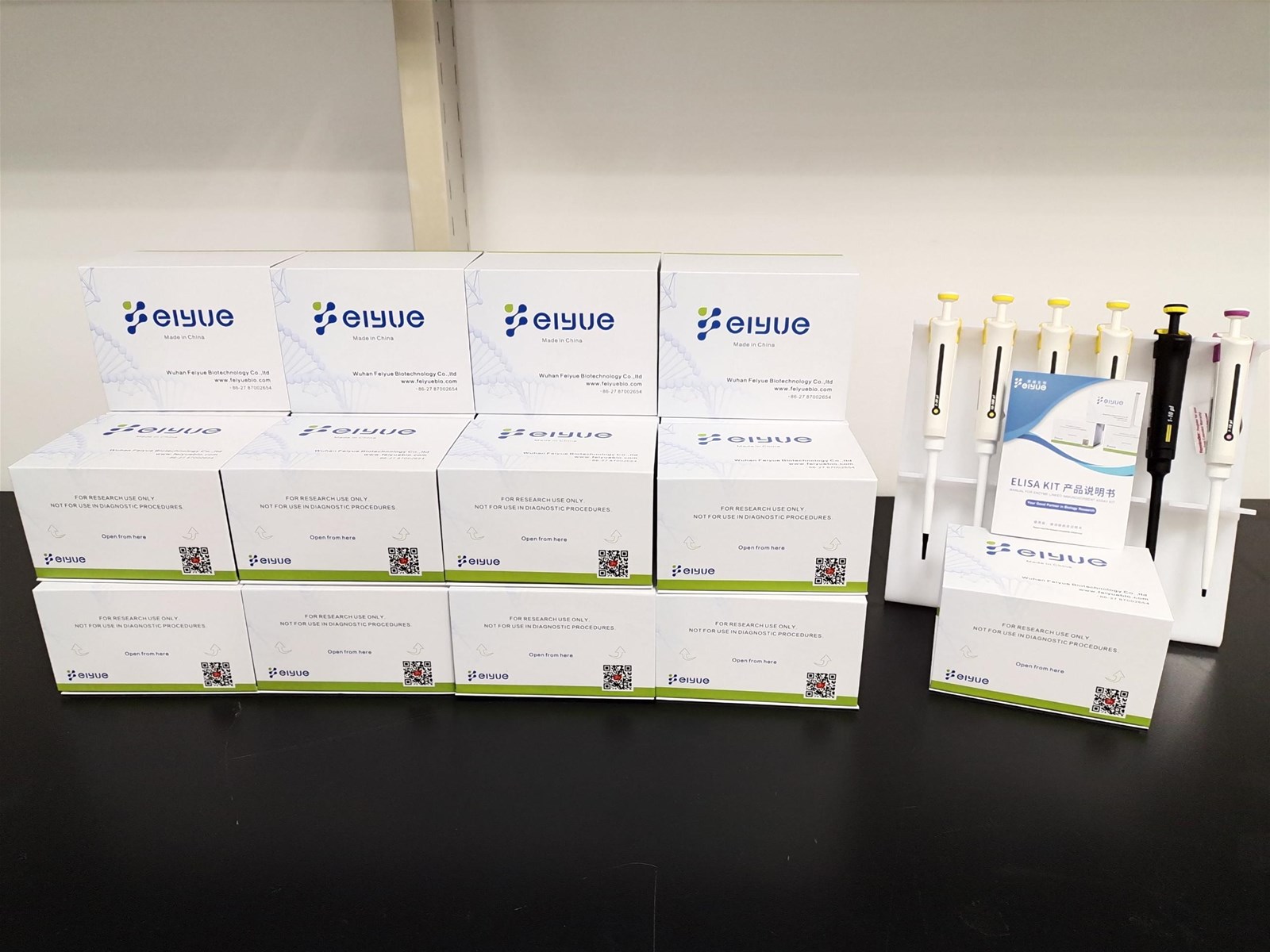| Place of Origin: | China (Mainland) |
|---|
Quick Details
Specifications
Human OGN(Mimecan) ELISA Kit Basic Information
Feiyue's Human OGN is an ELISA reagent for detection of OGN in serum, plasma or cell with sensitivity, specificity and consistency.

Human OGN(Mimecan) Introduciton
Osteoglycin (also called mimecan), encoded by the OGN gene, is a human protein. this gene encodes a protein which induces ectopic bone formation in conjunction with transforming growth factor beta. this protein is a small keratan sulfate proteoglycan which contains tandem leucine-rich repeats (LRR). the gene expresses three transcript variants. the level of expression of this gene has been correlated with enlarged hearts and more specifically left ventricular hypertrophy.
Human OGN(Mimecan) ELISA Kit Test method
this kit uses sandwich ELISA to detect the concentration of Human OGN.
Human OGN-specific monoclonal antibody has been pre-coated in the wells of the supplied microplate. Standards samples and controls are added to interact with the immobilized antibody. A sandwich complex is formed by additional anti-Human OGN antibody with HRP-Streptavidin. TMB solution is added to react with the sandwich for ming optical signal measured by microplate reader. the concentration of Human OGN in the sample can be calculated by comparing the absorbance of the sample with the standard curve.
Product Name |
Human OGN(Mimecan) ELISA Kit |
Catalog NO. |
FY-EH4163 |
Alias |
OGN; Osteoglycin; Osteoinductive factor; KSPG25; OIF; SLRR3A; DKFZp586P2421; mimecan; mimecan proteoglycan; OIFOG; Osteoglycin; osteoglycin; osteoglycin; osteoinductive factor; Osteoinductive factor; SLRR3Acorneal keratan sulfate proteoglycan |
Application |
OGN ELISA Kit allows for the in vitro quantitative determination of OGN concentrations in serum, plasma, tissue homogenates and other biological fluids. |
Size |
48T, 96T |
Storage |
2-8 ℃ for 6 months |
Sensitivity |
<0.094ng/ml |
Species |
Human |
UniProt ID |
P20774 |
CV (%) |
Intra-Assay: CV<8% |
Note |
for Research Use Only |
Feiyue's Human OGN is an ELISA reagent for detection of OGN in serum, plasma or cell with sensitivity, specificity and consistency.
Human OGN(Mimecan) Introduciton
Osteoglycin (also called mimecan), encoded by the OGN gene, is a human protein. this gene encodes a protein which induces ectopic bone formation in conjunction with transforming growth factor beta. this protein is a small keratan sulfate proteoglycan which contains tandem leucine-rich repeats (LRR). the gene expresses three transcript variants. the level of expression of this gene has been correlated with enlarged hearts and more specifically left ventricular hypertrophy.
Human OGN(Mimecan) ELISA Kit Test method
this kit uses sandwich ELISA to detect the concentration of Human OGN.
Human OGN-specific monoclonal antibody has been pre-coated in the wells of the supplied microplate. Standards samples and controls are added to interact with the immobilized antibody. A sandwich complex is formed by additional anti-Human OGN antibody with HRP-Streptavidin. TMB solution is added to react with the sandwich for ming optical signal measured by microplate reader. the concentration of Human OGN in the sample can be calculated by comparing the absorbance of the sample with the standard curve.



